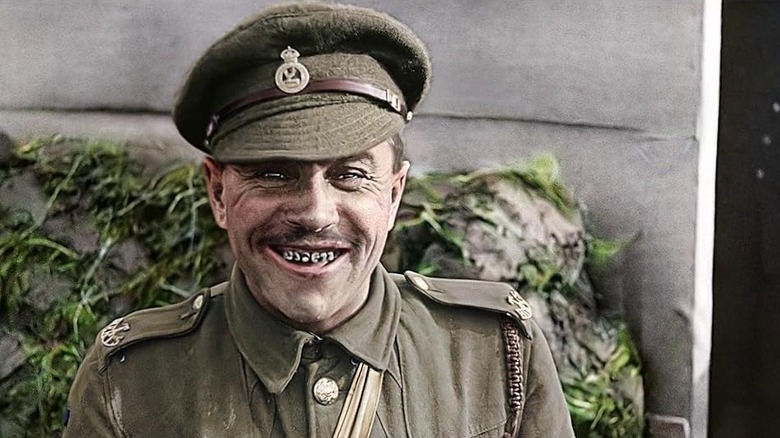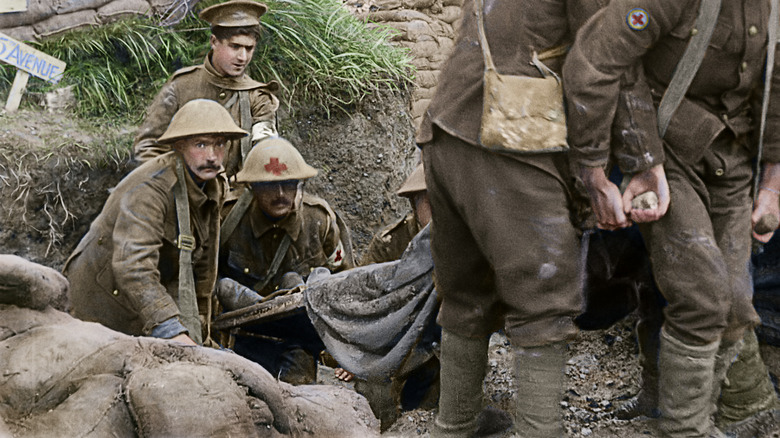Within the mid-2000s, director Peter Jackson was driving excessive on the success of his “Lord of the Rings” motion pictures, having received a number of Academy Awards and made gazillions of {dollars}. For his follow-up movie, Jackson was allowed to bask in a high-profile self-importance challenge: an effects-laden, $200 million remake of “King Kong,” because the 1933 unique was one in every of his favourite motion pictures. The movie itself was solely okay. Nonetheless, whereas he was making “King Kong,” Jackson appeared to develop a brand new creative curiosity.
You see, Jackson knew of an excised “spider pit” sequence that had been reduce from the 1933 “King Kong.” Therefore, he determined — simply as a facet challenge — to make use of his clout to recreate what it may need appeared like utilizing classic movie and results. The outcomes are enjoyable sufficient (you’ll be able to see them on-line), however Jackson had clearly been bitten by a bug. Following his spider pit experiment, Jackson grew to become obsessive about recreation and restoration.
After one other misguided stab at status (“The Pretty Bones”) and his personal much-criticized, George Lucas-like prequel trilogy (the “Hobbit” motion pictures), Jackson lastly gave himself permission to completely bask in his restoration habits. The British Imperial Warfare Museum, it turned out, had century-old silent movie reels of English troopers preventing on the entrance throughout World Warfare I and had approached Jackson in 2015 about restoring the fabric in a contemporary context. Jackson went hog wild in response, colorizing the footage and utilizing digital trickery to change the early frame-rates to look smoother and extra modern, all of the whereas remixing it in 3D. The century-old footage abruptly appeared prefer it was shot on fashionable digital cameras.
Jackson was additionally handed previous BBC interviews with WWI-era troopers, so he elected to play the audio over his restored footage. The ensuing movie, titled “They Shall Not Develop Previous,” was launched in theaters in 2018 to a lot important acclaim, as evidenced by its 99% rating on Rotten Tomatoes. (You possibly can take a look at /Movie’s personal overview of the film right here.)
They Shall Not Develop Previous is a captivating experiment
The movie inventory that was used to shoot on-the-ground footage throughout World Warfare I ran by means of the cameras at 13 frames per second. When it ran again, it both appeared “uneven” to the attention or ran extremely quick. Till the invention of synch sound within the late Nineteen Twenties, there wasn’t an industry-wide normal as to how rapidly movie ought to run by means of a digicam or a projector, so many silent movies appear to have the identical “uneven” or “too fast” qualities. Due to this, Jackson used digital instruments to “fill in” the lacking frames within the footage used for “They Shall Not Develop Previous,” bringing it as much as the post-sound normal of 24 frames per second.
Jackson additionally employed skilled lip-readers to determine what the WWI troopers have been saying as they have been being filmed. He then recruited actors to carry out their “dialogue,” basically including human voices to the place it had by no means been recorded. As well as, Jackson built-in new sound results for the tanks on digicam, in addition to the shifting clothes, splashing mud, and different ambient noises.
The result’s as reasonable as one would possibly hope. “They Shall Not Develop Previous” seems like a museum piece; it is an homage to British troopers that is delivered to life with miraculous new restoration applied sciences. The audio recordings, in the meantime, let the troopers have their precise voices, relating the harrowing experiences they’d preventing within the trenches. They talked about their terrible situations, the toilet scenario, and the lengthy breaks of doing nothing. “They Shall Not Develop Previous” makes a century-old battle really feel fast and human.
Most critics have been fascinated by the experiment and happy to see how Jackson’s digital polish revealed relatable, unrefined younger males. A few of them are crass and uncouth. Take into account that within the 1910s, when the footage was shot, nobody had a second intuition as to how they need to behave in entrance of a digicam. They appear relaxed and flippant in a means that no fashionable human is anymore.
They Shall Not Develop Previous was additionally criticized for being philosophically doubtful
Many opinions (together with the one I wrote for IGN again within the day) did sense that there have been some tough ethics at play with Jackson’s restoration, nonetheless. Jackson wasn’t essentially “bringing footage to life,” however adapting older footage to match what fashionable eyes are used to. In follow, it appears nice, however philosophically, one would possibly equate his actions with filmmakers colorizing black-and-white classics or creating digital avatars of lifeless actors.
Recall that the footage seems the way in which it does due to the tech obtainable on the time, so maybe it is our job as viewers to change into accustomed to it, fairly than the opposite means round. How usually will we have to “replace” previous footage to make it consumable to fashionable eyes? And the way lengthy earlier than the majority of what we’re seeing will not be a copy however wholly new footage? In spite of everything, virtually half of what we understand in “They Shall Not Develop Previous” was created artificially.
Some critics additionally famous that “They Shall Not Develop Previous” lacks lots of historic context. It is not a lot concerning the that means of the battle, or the explanations individuals are preventing, however the troopers themselves. It really works as a movie experiment and an homage to veterans, nevertheless it’s not nice historical past.
The movie’s solitary “rotten” overview posted on Rotten Tomatoes comes from Pamela Hutchinson, writing for Silent London. She felt that the digital restoration really made the footage look much less reasonable, as if Jackson had been irresponsibly utilizing real-life troopers as an excuse to make new digital avatars, indulging solely in his technical obsessions. The “smoothed out” actions of the 24fps, she wrote, made the troopers float in an eerie means, whereas the colorization gave everybody the very same synthetic “peach” pores and skin tone. The movie was, she mentioned, extra like digital rotoscoping than correct restoration.
It is actually a terrific movie to spark debate.

